Boyla O. Mainsah
Parameter Tuning of Time-Frequency Masking Algorithms for Reverberant Artifact Removal within the Cochlear Implant Stimulus
Aug 12, 2021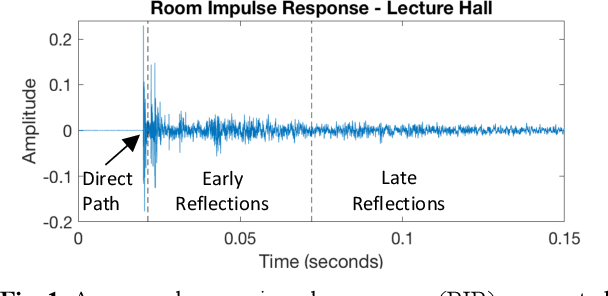


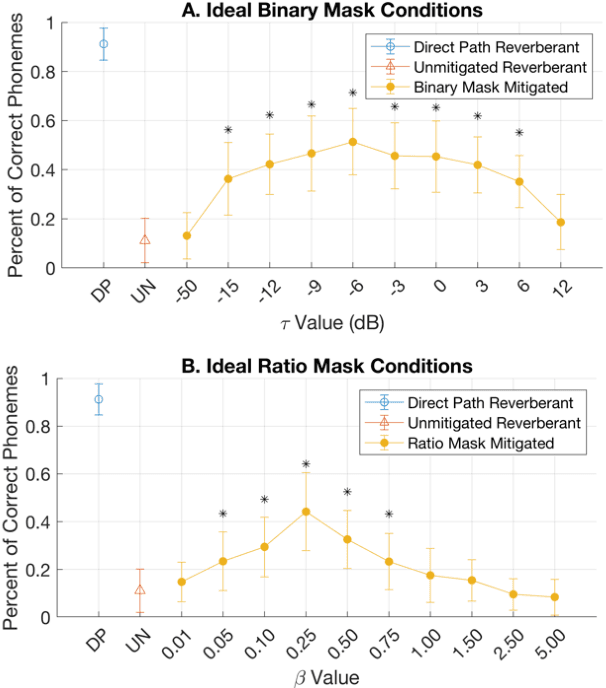
Abstract:Cochlear implant users struggle to understand speech in reverberant environments. To restore speech perception, artifacts dominated by reverberant reflections can be removed from the cochlear implant stimulus. Artifacts can be identified and removed by applying a matrix of gain values, a technique referred to as time-frequency masking. Gain values are determined by an oracle algorithm that uses knowledge of the undistorted signal to minimize retention of the signal components dominated by reverberant reflections. In practice, gain values are estimated from the distorted signal, with the oracle algorithm providing the estimation objective. Different oracle techniques exist for determining gain values, and each technique must be parameterized to set the amount of signal retention. This work assesses which oracle masking strategies and parameterizations lead to the best improvements in speech intelligibility for cochlear implant users in reverberant conditions using online speech intelligibility testing of normal-hearing individuals with vocoding.
Phoneme-Based Ratio Mask Estimation for Reverberant Speech Enhancement in Cochlear Implant Processors
May 28, 2021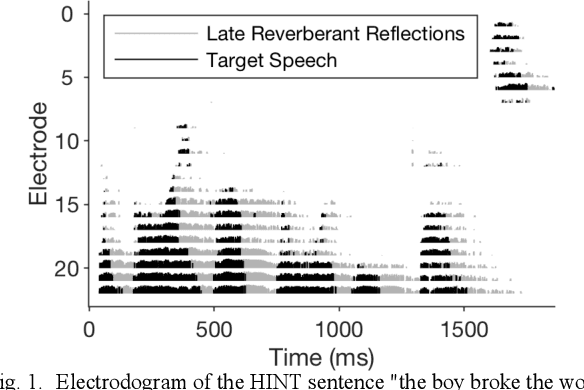
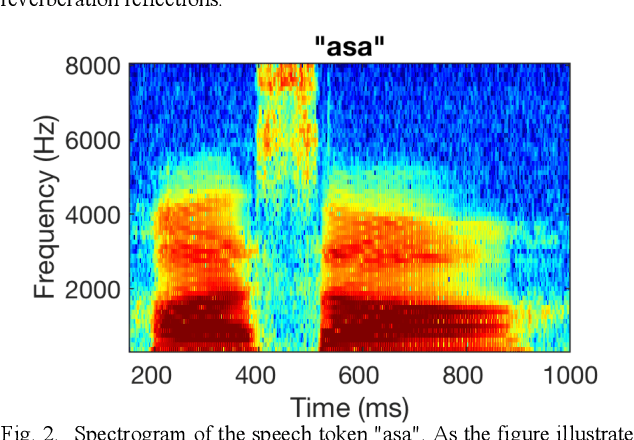
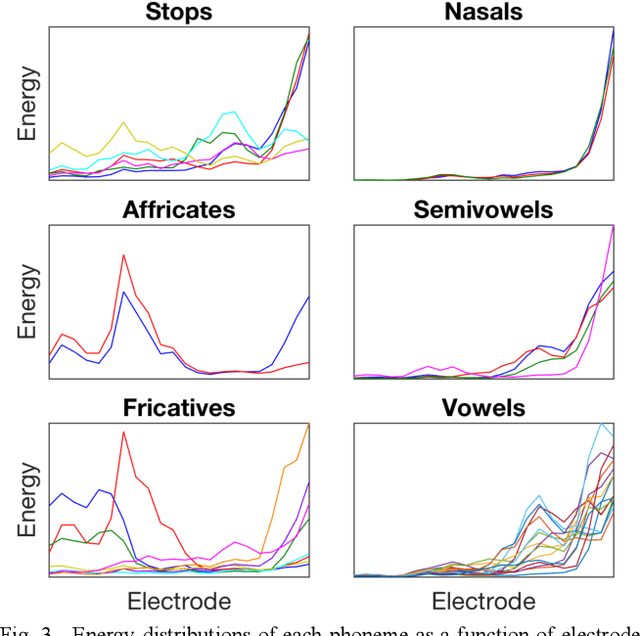
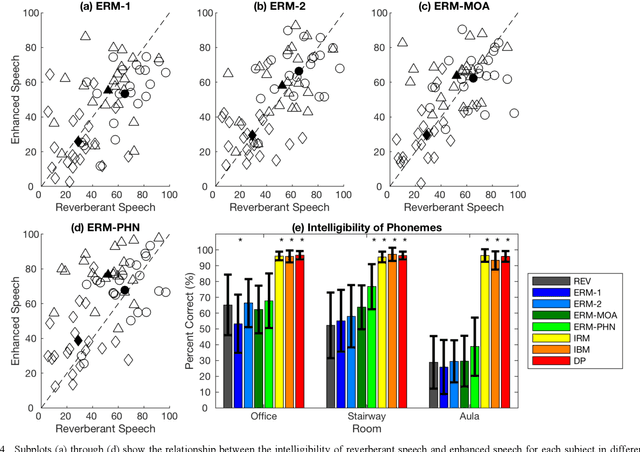
Abstract:Cochlear implant (CI) users have considerable difficulty in understanding speech in reverberant listening environments. Time-frequency (T-F) masking is a common technique that aims to improve speech intelligibility by multiplying reverberant speech by a matrix of gain values to suppress T-F bins dominated by reverberation. Recently proposed mask estimation algorithms leverage machine learning approaches to distinguish between target speech and reverberant reflections. However, the spectro-temporal structure of speech is highly variable and dependent on the underlying phoneme. One way to potentially overcome this variability is to leverage explicit knowledge of phonemic information during mask estimation. This study proposes a phoneme-based mask estimation algorithm, where separate mask estimation models are trained for each phoneme. Sentence recognition tests were conducted in normal hearing listeners to determine whether a phoneme-based mask estimation algorithm is beneficial in the ideal scenario where perfect knowledge of the phoneme is available. The results showed that the phoneme-based masks improved the intelligibility of vocoded speech when compared to conventional phoneme-independent masks. The results suggest that a phoneme-based speech enhancement strategy may potentially benefit CI users in reverberant listening environments.
Assessing the intelligibility of vocoded speech using a remote testing framework
May 28, 2021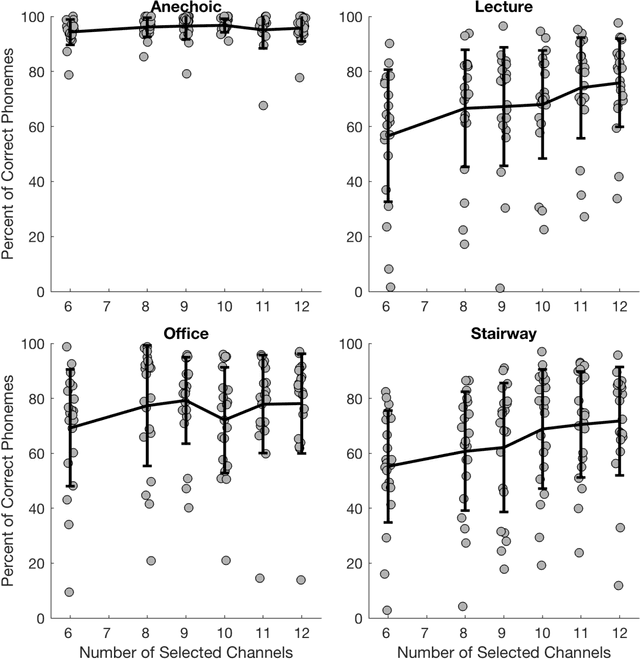
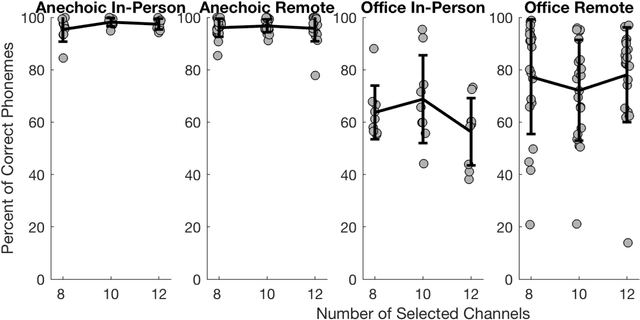
Abstract:Over the past year, remote speech intelligibility testing has become a popular and necessary alternative to traditional in-person experiments due to the need for physical distancing during the COVID-19 pandemic. A remote framework was developed for conducting speech intelligibility tests with normal hearing listeners. In this study, subjects used their personal computers to complete sentence recognition tasks in anechoic and reverberant listening environments. The results obtained using this remote framework were compared with previously collected in-lab results, and showed higher levels of speech intelligibility among remote study participants than subjects who completed the test in the laboratory.
Evaluating the Effect of Longitudinal Dose and INR Data on Maintenance Warfarin Dose Predictions
May 06, 2021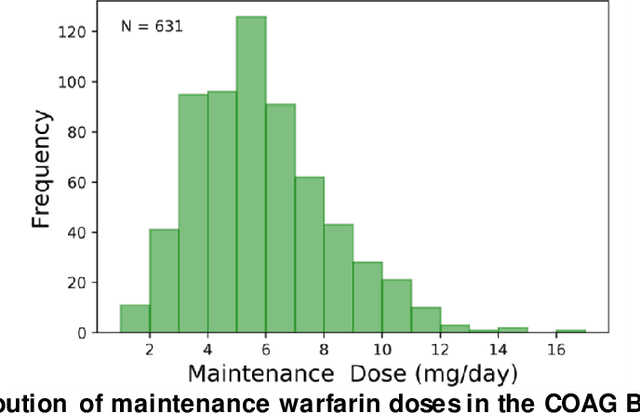

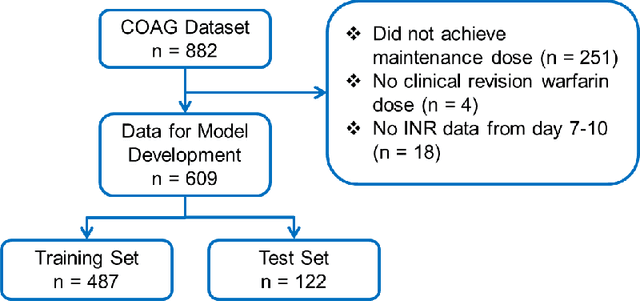

Abstract:Warfarin, a commonly prescribed drug to prevent blood clots, has a highly variable individual response. Determining a maintenance warfarin dose that achieves a therapeutic blood clotting time, as measured by the international normalized ratio (INR), is crucial in preventing complications. Machine learning algorithms are increasingly being used for warfarin dosing; usually, an initial dose is predicted with clinical and genotype factors, and this dose is revised after a few days based on previous doses and current INR. Since a sequence of prior doses and INR better capture the variability in individual warfarin response, we hypothesized that longitudinal dose response data will improve maintenance dose predictions. To test this hypothesis, we analyzed a dataset from the COAG warfarin dosing study, which includes clinical data, warfarin doses and INR measurements over the study period, and maintenance dose when therapeutic INR was achieved. Various machine learning regression models to predict maintenance warfarin dose were trained with clinical factors and dosing history and INR data as features. Overall, dose revision algorithms with a single dose and INR achieved comparable performance as the baseline dose revision algorithm. In contrast, dose revision algorithms with longitudinal dose and INR data provided maintenance dose predictions that were statistically significantly much closer to the true maintenance dose. Focusing on the best performing model, gradient boosting (GB), the proportion of ideal estimated dose, i.e., defined as within $\pm$20% of the true dose, increased from the baseline (54.92%) to the GB model with the single (63.11%) and longitudinal (75.41%) INR. More accurate maintenance dose predictions with longitudinal dose response data can potentially achieve therapeutic INR faster, reduce drug-related complications and improve patient outcomes with warfarin therapy.
 Add to Chrome
Add to Chrome Add to Firefox
Add to Firefox Add to Edge
Add to Edge